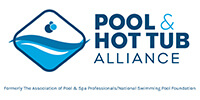Pool Water Chemistry: What You Need to Know

09/26/2012 | Categories: Pool Maintenance
Pool Water Chemistry: What You Need to Know | Sunshine Fun
Having good pool chemistry is critical for preventing bacterial and algae growth, insuring the pool’s health and optimal safety for people swimming in the pool. So what do you need to know about pool water chemistry?
==> Picking and Using Chlorine
The first step to maintaining healthy pool chemistry is selecting the right kind of chlorine.
When it comes to choosing chlorine, you really do get what you pay for. There are cheaper sticks of chlorine that you can purchase that may look a lot like the more expensive ones, but once they’re in use you’ll notice a big difference.
High quality chlorine dissolves very slowly in the pool. On the other hand, low quality chlorine dissolves much more quickly and will have disappeared in about three days. The stick may look like it’s the same size, but much of it is filler.
The most cost effective kind of chlorine comes in 3-inch tablets, though if you run a smaller pool you may choose to go with a 1 inch tablet. Aim to get a table that has at least 85% of Trichloro-S-Triazinetrione.
==> Chlorine Feeding System
The system you use to feed the chlorine into your pool matters a great deal. If you just place the chlorine in your pool or put it in a skimmer, your chlorine levels will be far too high. That level of chlorine will corrode your pump and circulation systems.
Instead, opt for purchasing either an automatic feeder or a chemical feeder. Both work very well for dispersing the chlorine into the pool slowly.
==> Get Your pH Levels Right
If your pH levels are off, your swimmers are going to feel like their eyes are burning when they swim in your pool. In order to manage your pH, you’re going to need a pH testing kit.
The ideal pH for a swimming pool is 7.4, plus or minus 0.2 pH. If you’re off by even 1 pH, the chlorine in your pool won’t be able to do its job. Bacteria and insects will be able to invade your pool freely.
It’s rare that you’ll have a low pH problem. Generally, your challenge will be lowering the pH levels of your pool. You can do this by using granular acid (slower) or muriatic acid (faster but more dangerous.) Make sure your pump is turned on full blast when you add these chemicals.
Change your pH levels slowly and keep retesting. Don’t add a ton of chemicals only to find you overshot your goal, only to have to use more chemicals to bring the pH back up.
These are some of the most important factors you need to know about to maintain a healthy pool chemistry.
For in College Station TX, please contact us today.















